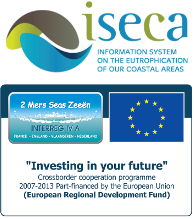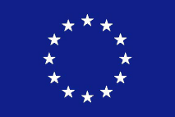| [ report an error in this record ] |
 |
| Laboratorium voor Algemene Plantkunde en Natuurbeheer (VUB-APNA) | |
|
https://we.vub.ac.be/en/ecology-and-biodiversity seadatanet.maris2.nl/v_edmo/print.asp?n_code=2073 | |
|
English name: Plant Biology and Nature Management Laboratory Thesaurus terms (12) : Aquatic plants; Biochemistry; Biodiversity; Botany; Climate change; Ecosystem functioning; Environment management; Limnology; Mangroves; Mangroves; Molecular biology; Water quality Address: Pleinlaan 2 1050 Brussel Belgium | |||
| Type: Scientific | |||
| Person formerly associated with this organization | Top | |
|
| ||
| Abstract: |
| The Ecology and Biodiversity research unit is currently in a phase of transition, following the retirement of Prof. dr. Nico Koedam (currently emeritus). The research group has ca. 30 years experience with developing projects on coastal foundation species, predominantly mangroves and seagrasses. The group has broad experience with research on mangrove functional physiology, mangrove ecology, dispersal ecology, biogeography and conservation (management), including socio-ecological systems, in close collaboration with Prof. dr. Farid Dahdouh-Guebas (Université Libre de Bruxelles and VUB). Currently, the work by Prof. dr. em. Nico Koedam and Prof. dr. em. Ludwig Triest is continued and further developed by Prof. dr. Tom Van der Stocken (VUB and NASA-Caltech Jet Propulsion Laboratory, JPL), in close collaboration with the mangrove research team at ULB and with Prof. dr. Bram Vanschoenwinkel at VUB (spatial ecology). While the general theme of research activities consists of the global ecology and biogeography of coastal wetland species, an important focus is on the interactions between mangroves (and also seagrasses) and climate change, using a multi-scale (local-to-global), multi-method approach. This includes climate-driven changes in their geographic distribution, their contribution to the marine and global carbon cycles, realised and fundamental niche estimates, as well as changes in ocean properties that may influnce the dispersal ecology in these systems, using in situ and ex situ experiments, numerical modelling, remote sensing, citizen science, and historical accounts (a.o. logbooks and photographs). In various projects collaboration (within Belgium) with VLIZ, the Royal Museum for Central Africa, UGent, and UHasselt is consolidated.
Seagrasses are studied for their population genetic structure, dispersal and distributional patterns across coastal lagoons and wetland areas. Molecular markers are designed using the most recent technologies. Isolation-by-distance is tested by means of different models at various spatial scales, from continent-wide phylogeography approaches up to fine-scaled spatial analyses of clones and their resilience within a lagoon. A coastal and marine field in the group addresses the connectivity of (as for now) European and North African wetlands, in the Palaearctic migratory route of waders/seabirds. This research is based on fieldwork and on connectivity modelling. It has an explicit relation to EU nature legislation. |
| Top |













